© ROOT-NATION.com - Use of content is permitted with a backlink.
The Armed Forces of Ukraine will soon receive Stryker armored personnel carriers. The relevant decision has already been made, and this equipment will be included in the military-technical assistance package.
In recent days, foreign countries have begun to discuss more actively the possibility of sending their armored vehicles to Ukraine. Thus, the United States has already announced the transfer of infantry fighting vehicles, Abrams tanks and Stryker armored personnel carriers. Other countries also do not rule out the possibility of supplying armored personnel carriers and tanks.
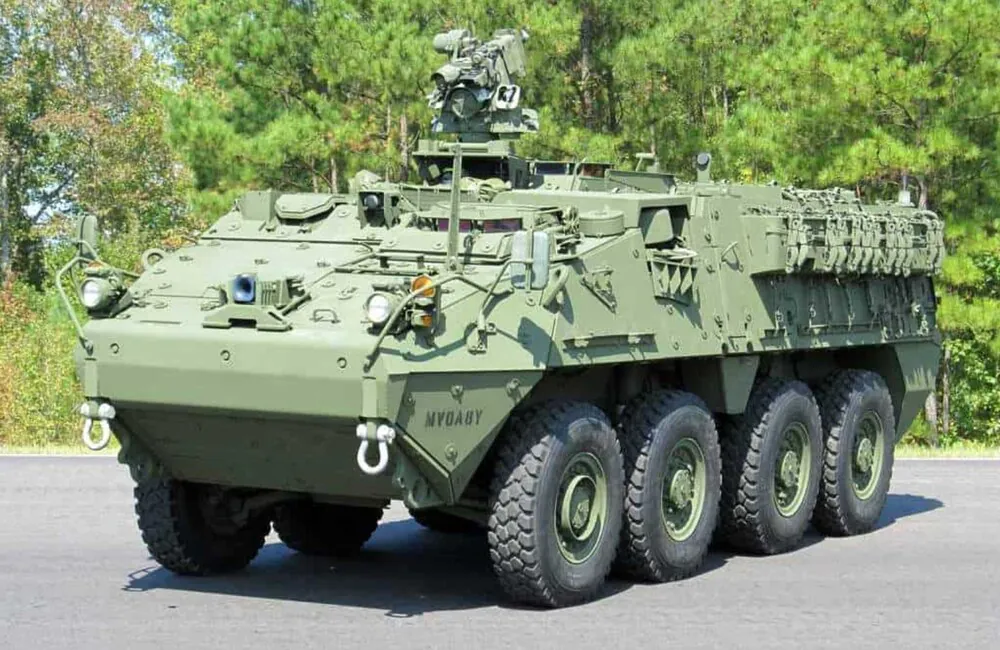
On January 9, the American publication Politico reported on the possible delivery of Stryker APCs. It received information about the relevant discussions from unnamed representatives of the US Department of Defense familiar with the situation. Later, this information was officially confirmed by the Pentagon.
The Stryker armored personnel carriers will be part of a new batch of military aid to Ukraine announced a week ago. For obvious reasons, our army’s need for armored vehicles is constantly growing, and the American APCs are expected to cover some of these needs. These armored vehicles will certainly increase the mobility and combat capability of the Ukrainian Armed Forces.
Read also: Weapons of Ukrainian victory: M1A2 Abrams tanks
From replenishing losses to creating new units
The supply of armored vehicles to Ukraine is an interesting story that illustrates the changes in the structure of the Ukrainian Armed Forces quite well.
Previously, NATO was literally scraping Soviet-style tanks and infantry fighting vehicles from its stockpile to somehow make up for the losses of Ukrainian troops without straining their logistics, repair capabilities, or the need to train personnel. A simple scheme in the style of: “a unit is out – it is replaced with a new one”. However, very soon the Soviet equipment in the stockpiles began to run out and, although the situation was far from stalemate, it was time for Western models of equipment to go to the combat zone.
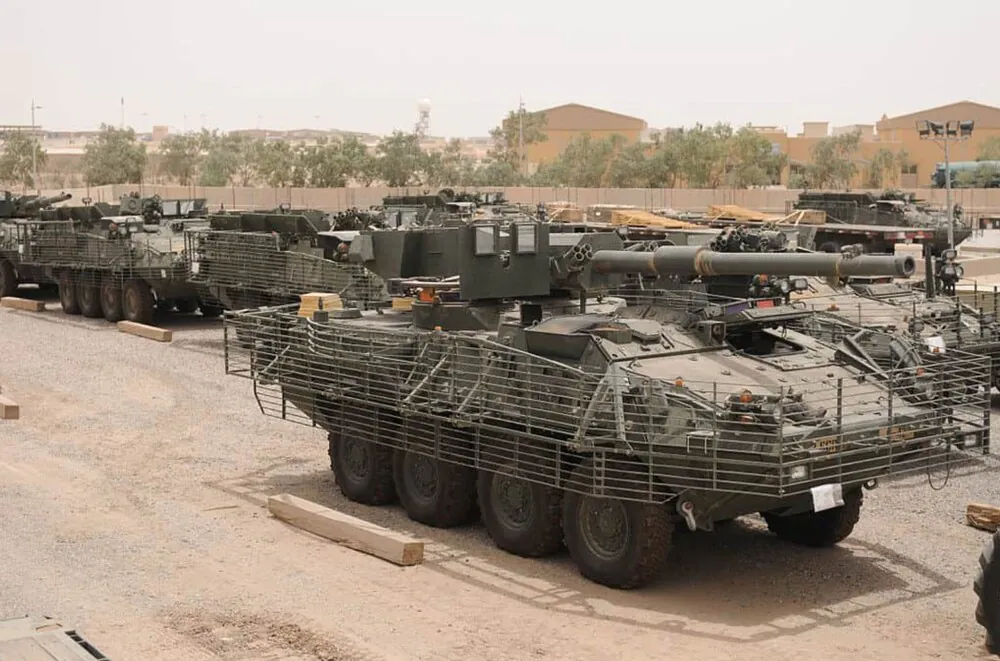
But the upcoming deliveries of all these Leopard 2s, M1A2 Abrams, Bradleys, and other equipment will take Western aid to Kyiv to a whole new level. Here, the old rules of replacing retired units with new ones no longer apply. They don’t work simply because, for example, it would be absolutely pointless to replenish a tank company consisting mainly of T-64s of various modifications with a number of German or British tanks. The situation is the same with Marder and Bradley infantry fighting vehicles and Styker armored personnel carriers.
Insufficient synchronization in communication systems, a complete lack of unification between Soviet and NATO equipment, ranging from types of shells to spare parts and repair kits, training of crews and repair teams – this set of problems will force either the formation of new units based on Western vehicles or the reformatting of existing ones. This will, of course, cause the Ukrainian Armed Forces command a lot more headaches, but it will allow them to organize much more effective groups – largely due to the characteristics of foreign equipment.
I suggest you finally get acquainted with the American Stryker armored personnel carriers.
Read also: Weapon of Ukrainian Victory: German Self-Propelled Howitzer Boxer RCH 155
A representative of the US armored personnel carrier series
The Stryker project was developed by General Dynamics Land Systems (GDLS) in the late 90s. Its goal was to create a unified wheeled armored platform and a family of combat and support vehicles based on it. The new platform was based on the existing LAV III armored vehicle, which had previously been developed for Canada on the basis of the Swiss Piranha armored personnel carrier.

By the early 2000s, several versions of the Stryker had been tested and recommended for use by the US Army. In 2000-2001, the Pentagon placed an order for the production of about 4.5 thousand armored vehicles of various versions. For the ground forces, they purchased M1126 armored personnel carriers, M1296 infantry fighting vehicles, M1127 reconnaissance vehicles, M1128 fire support vehicles, and others.
Deliveries of Stryker vehicles were accompanied by changes in the organizational structure and equipment of the troops. Such equipment was supplied to the so-called medium brigades, significantly increasing their mobility and providing them with broad combat capabilities.
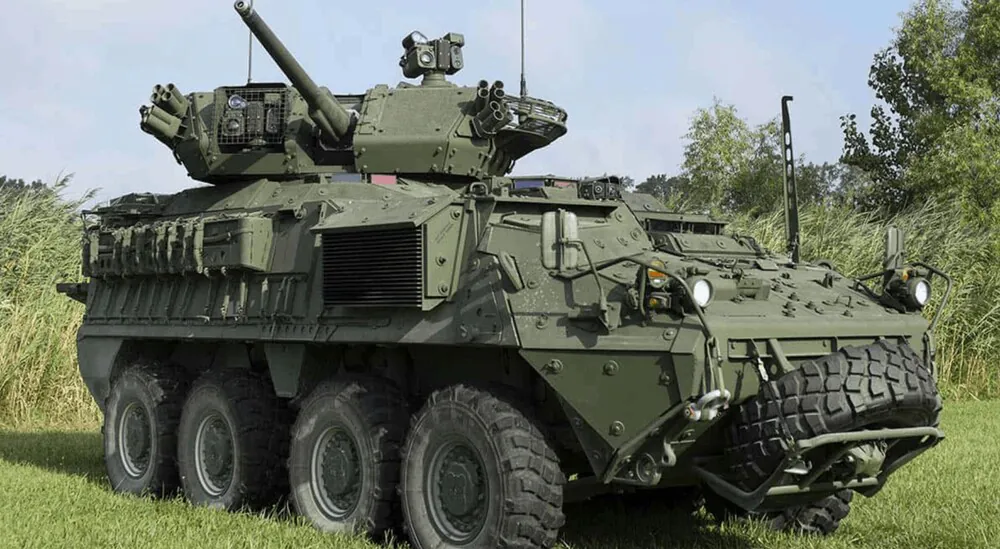
In 2003, units with Stryker APCs took part in a military operation in Iraq. The armored vehicles were highly praised during their operation in real combat operations. A fairly high level of protection, good mobility and ease of use were noted. At the same time, the vehicle did not protect the crews from all threats, and attempts to improve protection had a negative impact on other parameters. We will discuss the advantages and disadvantages of this vehicle below.
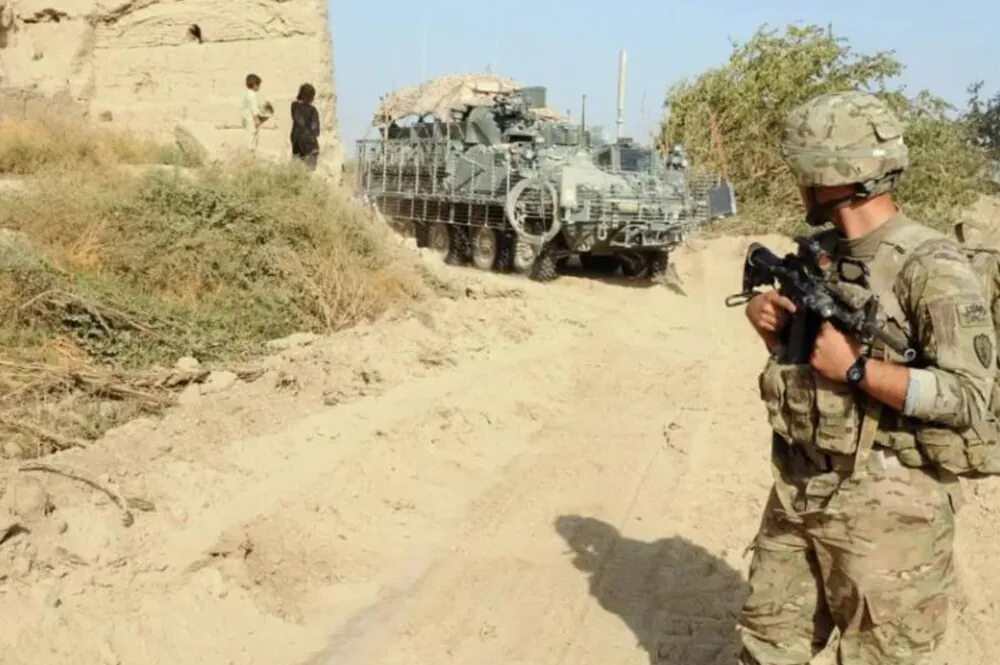
It is noteworthy that Stryker armored vehicles were produced only for the US Army. GDLS offered other unified models to foreign customers, but not the original Stryker. If the U.S. government makes a decision in the near future, Ukraine will become the first foreign recipient of this equipment.
Read also: Weapons of Ukrainian Victory: German Gepard Self-Propelled AA Gun
Stryker APC variants
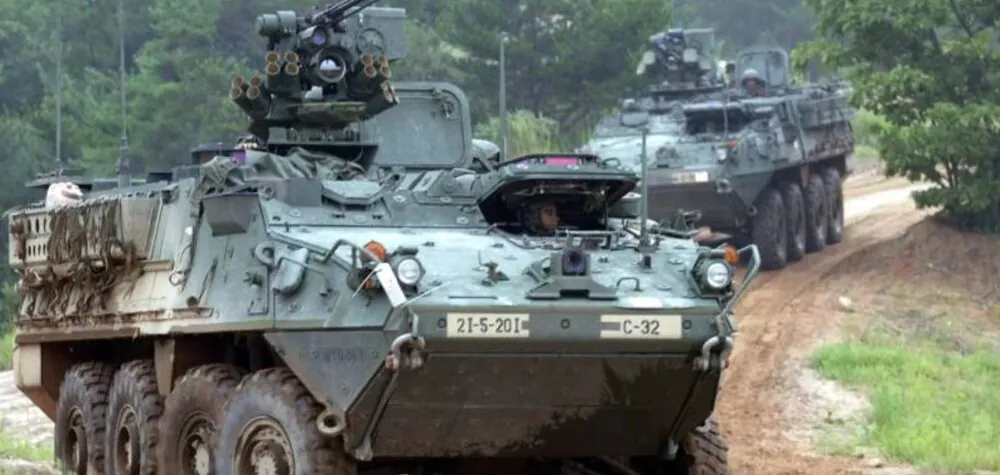
As already noted, several variants of Stryker APCs have been produced for different purposes. They differ slightly from each other, but retain the basic capabilities and functional focus. So, we have the following options:
- Stryker M1126 ICV: actually the basic version of the APC. The crew consists of two people (commander and driver) and can accommodate up to 9 infantry soldiers.
- Stryker M1127 (RV): a reconnaissance vehicle used by US military units for reconnaissance, surveillance and target acquisition. It is also often used by battalion reconnaissance troops who move across the battlefield to collect and transmit real-time surveillance data to gain awareness of the enemy’s situation and intentions.
- Stryker M1128 (MGS): mobile gun system. This version of the armored vehicle is armed with the M68A1 (M68A1E4) 105-mm rifled cannon.
- Stryker M1129 (MC): this variant of the APC, armed with a 120 mm Soltam mortar, supports infantry with fire cover (precision bombs and DPICM cluster bombs), suppression forces and provides retreat lighting, IR illumination, smoke screens, etc.
- Stryker M1130 (CV): a command and control vehicle that provides commanders with communication, information gathering, analysis and data preparation functions for combat missions; it can also connect to aircraft antennas to perform joint missions.
- Stryker M1131 (FSV): This variant is a fire support vehicle. It provides surveillance and communications (4 secure combat radio networks) with target identification, data is automatically transmitted to infantry and artillery units.
- Stryker M1132 (ESV): an engineering vehicle. The ESV has integrated obstacle avoidance and lane marking systems, as well as mine detection devices.
- Stryker M1133 (MEV): medical support vehicle – provides assistance and evacuation in case of severe injuries and trauma.
- Stryker M1134 (ATGM): an anti-tank vehicle armed with TOW guided missiles to reinforce infantry and reconnaissance, can fire from a long distance at armored vehicles beyond the effective range of the tank’s gun.
- Stryker M1135 (NBC RV): a reconnaissance vehicle with radiological, biological and chemical protection. Automatically combines information about contamination from detectors with data from navigation and meteorological systems and transmits digital warning messages to NBC.
Read also: Weapons of Ukrainian Victory: Leopard 2 Main Battle Tank
Stryker’s main advantages: protection and electronics
All models of the Stryker family are based on a unified wheeled platform, but receive different equipment and weapons. This platform has a welded steel hull with a mid-engine layout and a four-wheel drive chassis. The driver is located in the front of the vehicle, and troops or special equipment is located in the stern.
When considering a particular model of military equipment, armor is considered one of the most important parameters. It doesn’t matter whether we are talking about a tank, infantry fighting vehicle or armored personnel carrier. However, given the fact that an armored personnel carrier is not intended for a frontal attack on the positions of a heavily armed enemy, it is not worthwhile to set particularly high standards for it.
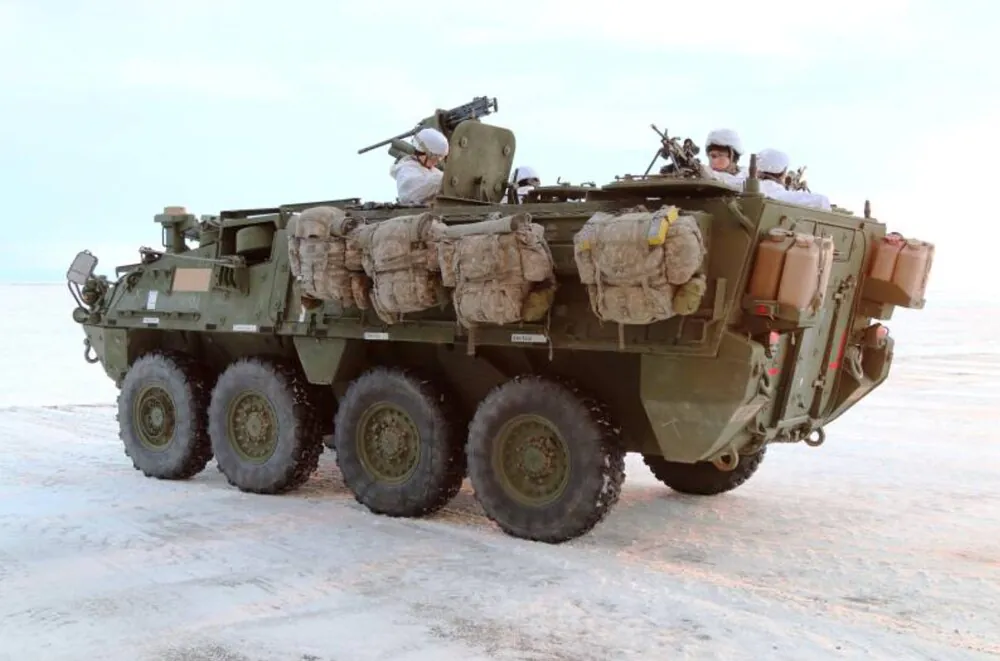
However, the Stryker can become one of the most protected and at the same time mass-produced armored personnel carriers in the Ukrainian army.
The hull’s own armor in the frontal projection provides level 4 protection according to STANAG 4569 (against 14.5-mm bullets). Other parts can withstand a 7.62-mm bullet hit (level 3). It is planned to install Mexas hinged armor, thanks to which the frontal part can withstand small-caliber projectiles. Part of the Stryker APC is equipped with active Iron Curtain protection.
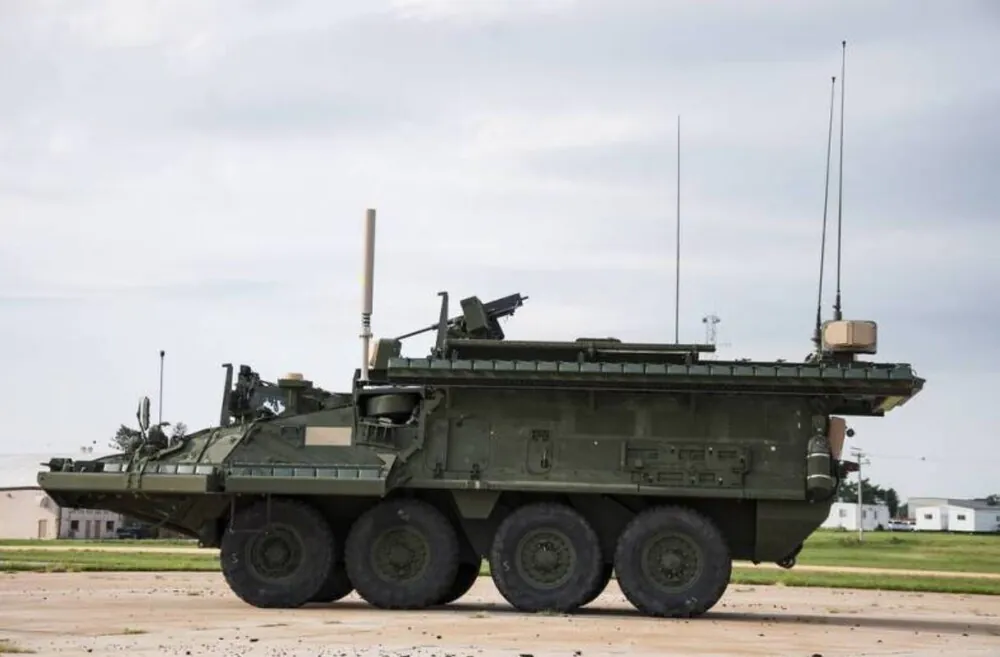
Neither the Soviet BTR-70/80 nor the lion’s share of foreign armored personnel carriers, including the M113, can deliver such high performance as the Stryker, for example, all-round protection against fire from a 14.5-mm machine gun. This is achieved due to the fact that the Stryker’s hull is made of high-hardness steel sheets, which are additionally covered with screw-on armor ceramic blocks. The weight of the armored personnel carrier due to the use of ceramic protection is 16.47 tons, which is only half a ton more than that of the same BTR-82A.
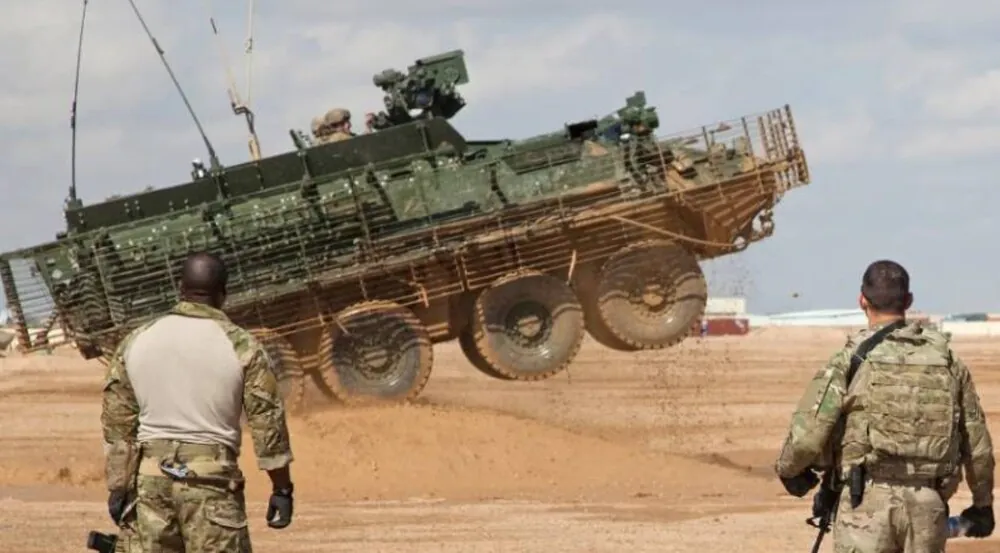
But such resistance to shelling in combat conditions also means increased protection from artillery shell fragments. It seems that the nature of combat operations in the current situation requires no explanation – artillery rules the day, so enemy units detected during reconnaissance are immediately covered by artillery in the area of its reach. Here, unlike its classmates, the Stryker will look much more favorable. Especially with enhanced mine protection, which, together with the above facts, will dramatically reduce casualties among infantry transported in APCs.
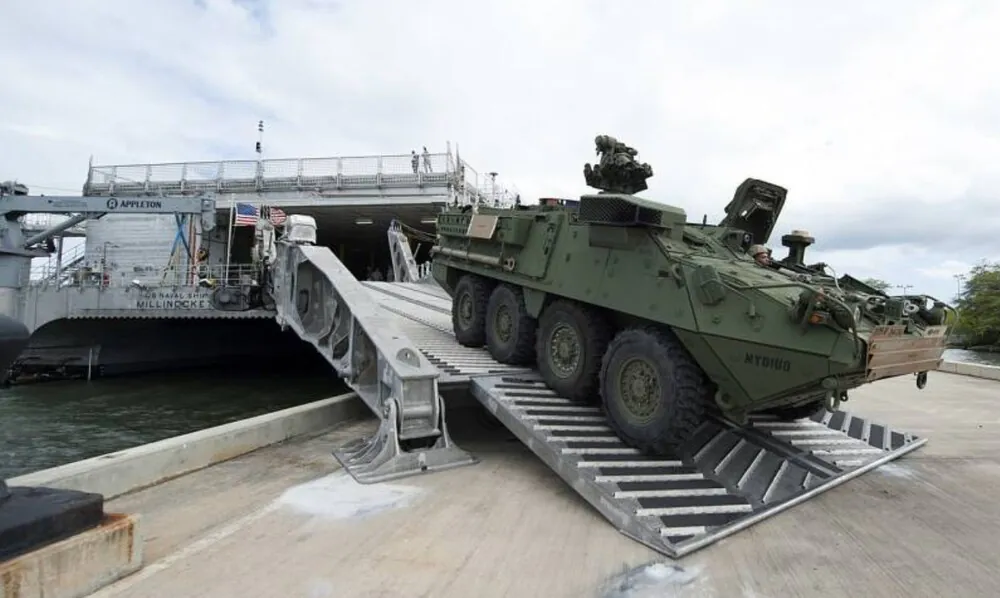
In addition, the American APCs can be equipped with anti-multipurpose grating screens that protect against PG-7 anti-tank grenades with a probability of about 50%. Whether these kits will be supplied to Ukraine is an open question, as this expands the range and affects the weight. But we should consider the possibility.
During the war in Afghanistan, the Stryker was modernized with a new set of V-shaped armor that increases protection against anti-personnel mines and improvised explosive devices.
Read also: Weapons of Ukrainian Victory: Iris-T SLM for Ukraine from Germany
Armament of APC Stryker
In the basic modification of the Stryker armored personnel carrier, we have a remote-controlled combat module with a medium or large caliber machine gun or an automatic grenade launcher. Other modifications of the vehicle can carry a small-caliber cannon, 105-mm rifled weapons, 120-mm mortar, TOW missiles, etc. The effective use of weapons is ensured by the FBCB2 battlefield control system.
Another advantage of the Stryker APC is the presence of a thermal imaging sight in the fire control system. It is well known how important thermal imaging systems are nowadays. Unlike simple optics, such systems can detect and identify targets at a distance of several kilometers at any time of day or night and in almost any weather conditions (very heavy snow or completely impenetrable fog reduces the range of vision), which is useful not only in a conditional clean field but also in buildings of varying density.
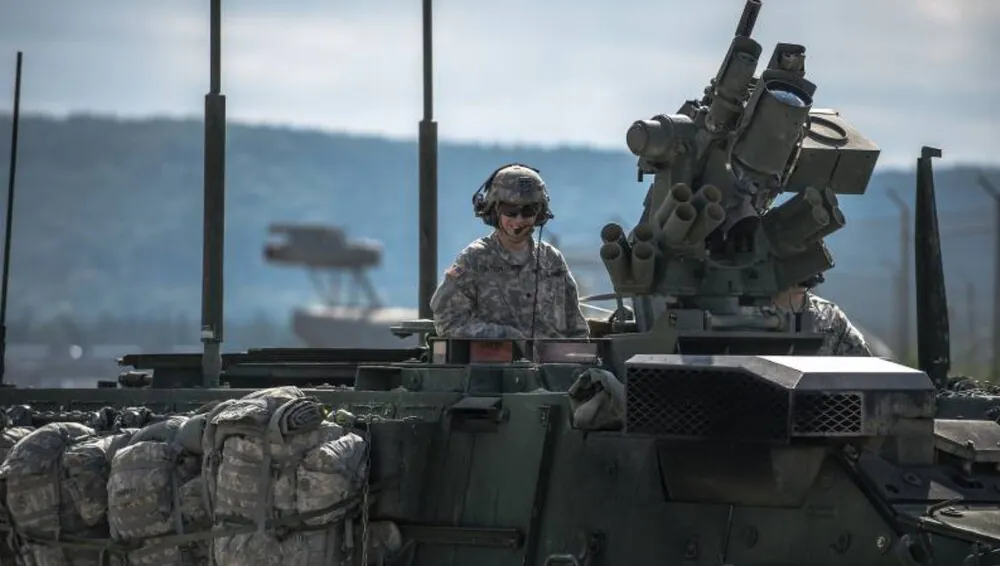
Given that most armored personnel carriers in the Ukrainian army do not have such technical capabilities, the value of the American gift is great.
To this can be added the equipping of Stryker APCs with GPS navigation equipment, which facilitates terrain orientation and coordination with neighboring units. Of course, everyone has tablets and phones with Internet access, but integrated equipment provides greater opportunities for interaction between the APC, its infantry and neighboring units. However, when it comes to working with “neighbors,” the American vehicle also has a friend-or-foe recognition system that minimizes the possibility of friendly fire.
Read also: Weapons of Ukrainian Victory: Aspide Anti-Aircraft Missile System
Powerful diesel engine
The entire platform of Stryker armored personnel carriers is equipped with a 350 hp Caterpillar 3126 diesel engine. With a combat weight of at least 17 tons, the vehicles of the family are capable of reaching speeds of 95-97 km/h on the highway and off-road. Due to their high weight, the machines do not float; water obstacles up to 1.2 m deep can be overcome by wading.
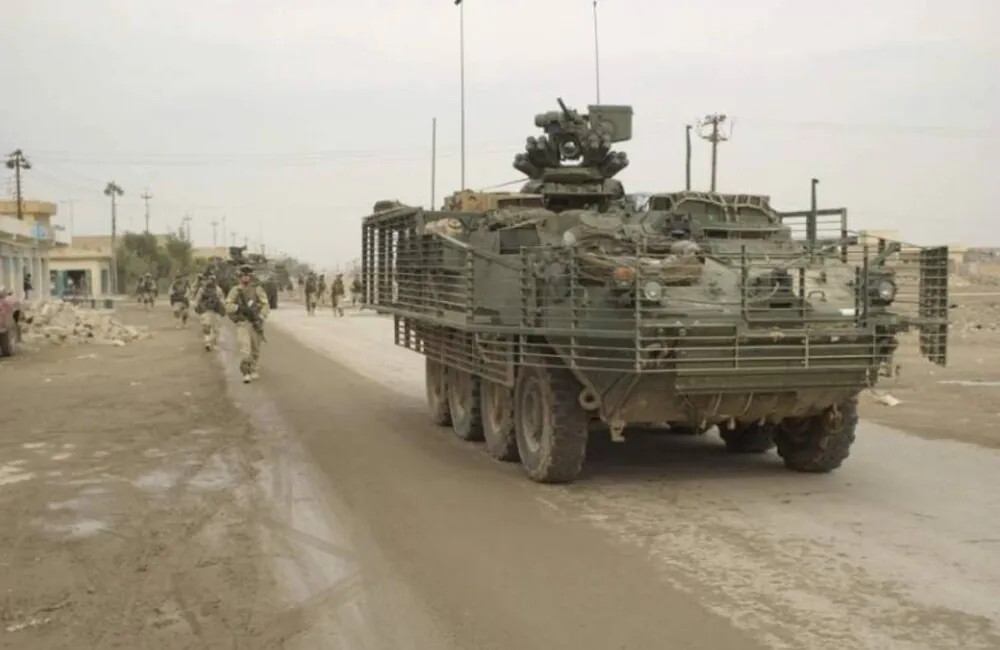
Read also: Weapons of Ukrainian victory: French Crotale SAM
Comfort for the crew and the troops
As I have already mentioned, the crew of a Stryker APC consists of two people: the commander and the driver of the vehicle. They are located in the front of the armored personnel carrier. A troop of up to 9 people is placed inside the APC.
It is also worth mentioning that the Stryker has much more comfortable conditions for infantry than Soviet and many Western models, including such massive armored personnel carriers as the M113. In addition, the Stryker APC is more reliable in operation and not too difficult to repair.
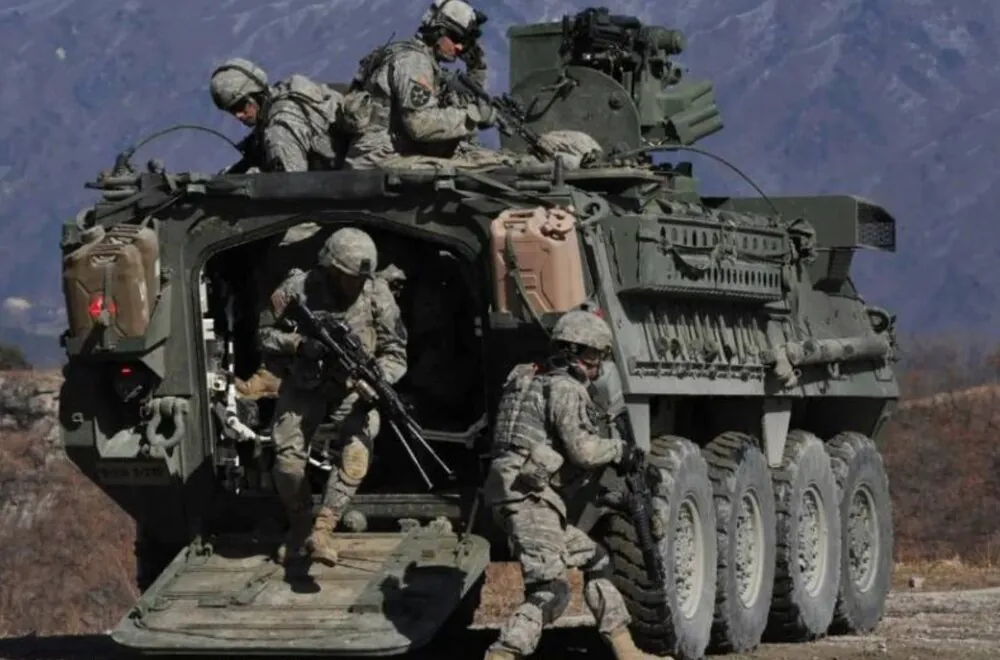
Additional equipment includes an automatic fire extinguishing system with sensors in the engine and landing compartments, which can also be activated by the driver, fuel tanks installed outside, and a hermetically sealed crew compartment. The commander’s seat is equipped with a day and night thermal imaging camera that allows him to see what the driver sees. The commander of the vehicle has almost 360-degree visibility; the driver’s visibility is just over 90 degrees. In addition, the commander’s vehicle has a digital communication system FBCB2 (Force XXI and below), which provides communication between vehicles via text messages and a mapping network, as well as communication with the battalion.
Read also: “Neptunes” knocked out “Moskva” cruiser: All about these anti-ship cruise missiles
Technical characteristics of the Stryker APC
- Dimensions: length 6.95 m; width 2.72 m; height 2.64 m
- Armor: V-shaped hull, standard armor with protection against small arms fire and shell fragments, protection against IDED and mines
- Armament: 7.62-mm or 12.7-mm machine gun, or 40-mm automatic grenade launcher and Javelin anti-tank guided missile launcher
- Weight: in combat condition 16.74 tons
- Top speed: up to 100 km/h
- Operational range: 500 km
- Capacity: 2 crew members + 9 special forces soldiers
- Additional equipment: centralized tire inflation, NBC protection system, day/night thermal imager, network map and communication system.
Read also: Weapons of Ukrainian victory: ATGM Stugna-P – Russian tanks are in trouble
Are there any drawbacks to the Stryker APC?
Among them, first of all, it is necessary to note the low passability on weak soils, which is typical for all wheeled vehicles, regardless of the country of origin. This, of course, is important in the conditions of Ukrainian black soil. Of course, Stryker has a tire pressure control system, but how it will perform in such conditions is a big question. Especially when using anti-cumulative grilles that increase the weight of the machine.
This also includes the low stability of the Stryker APC during sharp maneuvers and off-road driving due to its high center of gravity. Cases of overturning of these American APCs are not so rare, although they do not cause disasters.
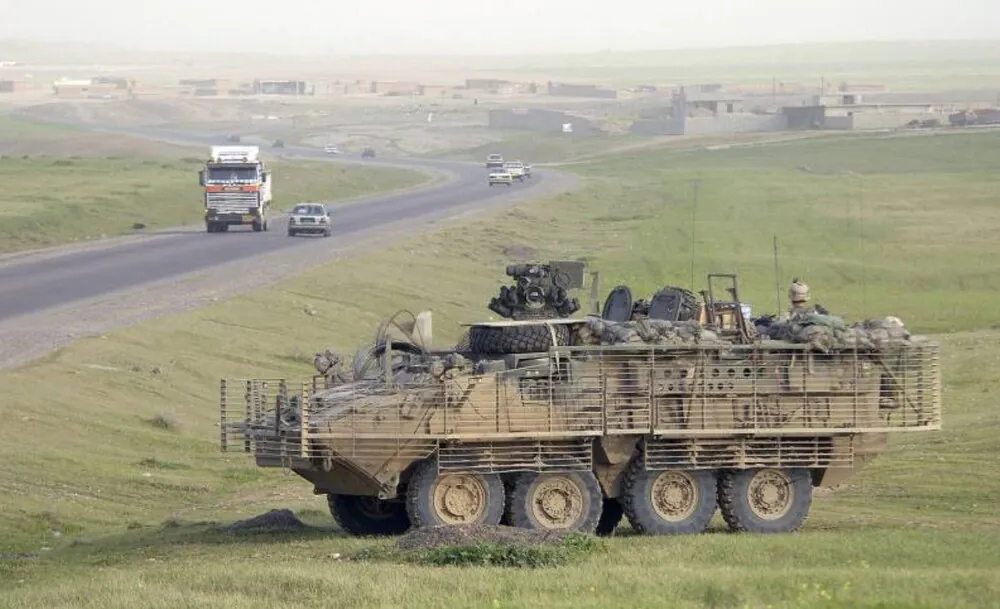
Another problem is the resistance of Stryker APC systems and components to low temperatures, which, for example, was revealed in Alaska. At -10°C, the number of failures of these vehicles increased so much that it took more time to repair them than to conduct combat operations during military exercises. So it will be interesting to see how this armored personnel carrier works in our conditions.
Undoubtedly, these minor disadvantages cannot be compared to its main advantages – good protection and a high level of technical equipment that Russian-made armored personnel carriers do not have.
I am confident that such reliable and protected equipment is essential for our defenders on the front line. That is why we are sincerely grateful to our Western partners, in particular the United States, for their support and supply of modern weapons.
We believe in our defenders. The invaders will not escape from retribution. Death to the enemies! Glory to the Armed Forces! Glory to Ukraine!
Read also:
- Silent killers of modern warfare: most dangerous military UAVs
- Weapons of Ukrainian Victory: BAE Systems CV90 infantry fighting vehicle
- Weapon of Ukrainian victory: Review of the Marder infantry fighting vehicle

